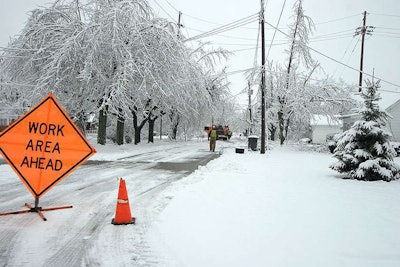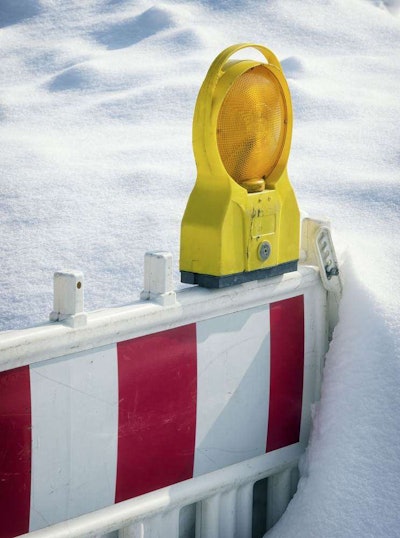
The bad news: highway and bridge construction workers don’t typically get “snow days,” or a day off because it’s a wee bit chilly outside. The good news: there are things that you can do to help you survive the winter’s worst weather.
Clothing
Wearing warm clothing is important, but on those really cold days – consider wearing two or even three layers of warm clothing. Although it may not be the most appealing clothing, you’ll thank yourself for remembering that extra sweatshirt when wind chills are below zero and dropping.
While wearing layers of clothing is important, don’t wear tight clothing. Tight clothing will reduce blood circulation, keeping warm blood from reaching your extremities.
“Dressing properly is extremely important to preventing cold stress and the type of fabric worn makes a difference,” an OSHA spokesperson told Better Roads. “Cotton loses its insulation value when it becomes wet. However, wool, silk and most synthetics retain their insulation even when wet.”
And don’t forget to protect your ears, face, hands and feet! Wearing an insulated hat that covers most of your head and face will help keep your entire body warmer. As for boots, make sure they’re both waterproof and insulated. This is especially important if you’re working in snow.
Breaks

During those days of extreme cold temperatures, be sure to take an extra break or two. During your breaks, find a warm and dry location that will allow your body to return to normal temperatures.
If any of your clothing has become wet from the snow and/or ice, change into some dry clothes. If you haven’t been keeping up on the fluids, grab a warm beverage.
“Warm, sweetened fluid will help increase the body temperature of the affected person,” says an OSHA spokesperson.
Do not end your break and resume working in the cold weather until you have allowed your body enough time to recuperate.
Be Prepared
Be sure you have all of the necessary cold weather gear. This includes a thermos for warm liquids and a first aid kit designed to help you out in cases of cold stress.
Place several chemical hot packs inside the first aid kit just incase you can’t get to a warm location as quickly as needed. If your hands or feet get too cold, consider placing a hot pack in your gloves and/or shoes.
“Additionally, employers should consider scheduling maintenance and repair jobs for warmer months, avoiding exposure to extremely cold temperatures and limiting the amount of time spent outdoors on extremely cold days,” an OSHA spokesperson said.
Stay Aware
This may be the most important step to staying safe in extreme cold winter weather conditions. Pay attention to your body, and your coworkers. If you notice yourself, or any coworkers shivering uncontrollably, becoming fatigued and/or disoriented – it’s time to take a break.
If you notice yourself, or any coworkers, showing more serious symptoms – blue skin, dilated pupils or an extremely low pulse and slow breathing – call 911 immediately. While waiting for emergency crews to respond, move the victim to a warm and dry location. Remove any wet clothing and cover him/her with dry blankets.
“A person can die if help is not received immediately,” an OSHA spokesperson told Better Roads.












